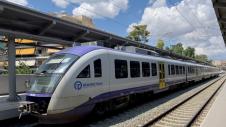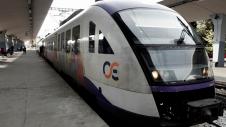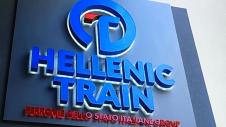Normalising the movement of goods by rail is the big issue for the second time in 2023 . The huge damage caused by the bad weather Daniel on the main axis Athens - Thessaloniki has cut the country's railways in two. The resumption of freight services on 10 December 2023 according to the plan - if everything goes smoothly - will be done with full locomotives to meet most of the demand.
This means that until 15 December, when passenger services are expected to start, the battle for containers will be fought by as many services as can be safely operated on the network, which will be electrified, but traffic will only be carried on one line. The speed will not be allowed to exceed 80 km per hour.
The pressure to restart freight trains is strong. It is no coincidence that, according to reports, the issue was also raised at length during the Prime Minister 's recent trip to China, given that the Chinese Cosco is the dominant player in freight through the port of Piraeus.
The alternative routes and the extra cost
After the Tempi accident , which put the handbrake on the routes from Athens to Northern Greece and Central Europe for three weeks, those involved had a plan B. The "escape channels" to prevent containers from getting trapped in Greek ports again had already been found and reactivated.
Today, most of the goods destined for the Greek railways do not pass through Greece, but travel either to ports in Italy or to Copper in Slovenia to continue their journey from there.
Of course, changing the means of transit is costly. Rail transport is cheaper and greener. The experience of the rail blockade in Idomeni a few years ago, during the refugee crisis, put the extra charge at €10,000 per train. The direct cost then for TRAINOSE (now Hellenic Train) was estimated at around EUR 5 million.
At the same time, the existing agreements include clauses for the delivery of goods, which if breached have additional costs. Today, the aggravated conditions compounded by rising fuel and energy costs, large revaluations in materials and consumables, and the pressure on the supply chain from the dysfunctions accumulated by the pandemic and the war in Ukraine are considered to be pushing up the additional costs.
In any case, the moves of Hellenic Train, which is the main player in freight transport in the largely 'closed' Greek market, are expected in the field of possible compensation under its agreement with the Greek state.
It is indicative that Hellenic Train 's freight revenues amounted to EUR 15.3 million in 2021 , following the upward trend since 2018. From the port of Neos Ikonios to the Balkans and Central Europe, 695 trains with a cargo corresponding to 49,560 containers (TEUs) left the port of Neos Ikonios, while 655 trains with a cargo of 43,568 TEUs moved to the port of Neos Ikonios. In 2021 , 578 tonne-kilometres were recorded.
The biggest blow to the railway itself
As Mr Nikos Argyridis, president of the Association of International Transit and Logistics Enterprises of Greece (SYNDDE&L), explains, speaking to BD, the losses are greater for the medium itself and its prospects than for domestic logistics. This is because rail has never managed to establish itself in our country as the dominant means of freight transport. Today, the share of rail in freight transport in our country is only 2.2%.
However, huge infrastructure problems are clouding our country's prospects of becoming a transit hub for South-Eastern Europe. Of course, in the two years ahead of us until the full restoration of the subsidy and infrastructure of the main railway axis, there is a great - perhaps the last - opportunity for the train to become a leading player.
The international tender for the rehabilitation of the network is currently being prepared, with resilience now being a key criterion in the design of the terms and conditions. For this reason, the project is reportedly being studied and designed with new environmental conditions focusing on the hydraulic systems, with the aim of ensuring good water drainage.
The final rehabilitation costs amount to EUR 185 million, financed by the Recovery Fund. The international tender, worth around €160 million, will be for the rehabilitation of the entire damaged network, i.e. 180 km, including 50 km of double track on the Domokos - Larissa section, 80 km on the Paleofarsalos - Kalambaka axis and a further 50 km on the Larissa - Volos section.








